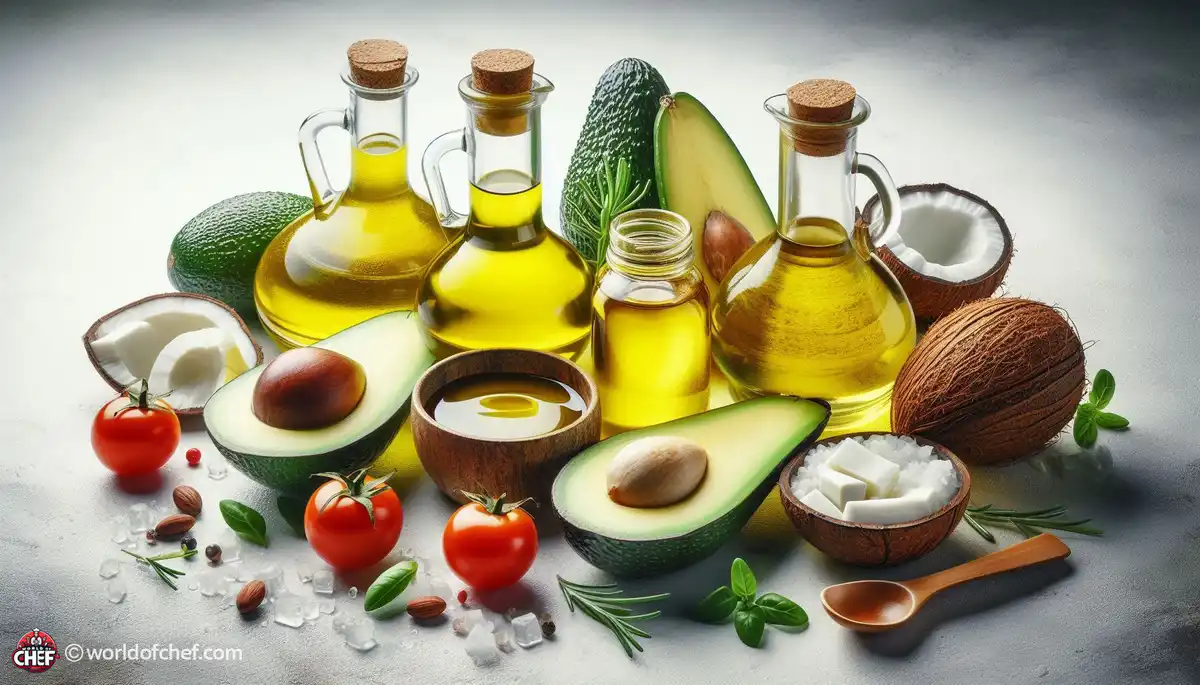
Simmering with Spices: Infusing Flavor into Your Dishes
Emery Donley - Oct 8, 2024 - 8 min read


Sauteing involves cooking fats that play a very central role in flavor, texture, and the nutritional profile. The use of butter has been historic, but with the goal of healthier fats, knowing the nutritional profiles of healthy fats is essential.
Not with a shadow of doubt; rather, it is to attain some form of butter or other form of butter which can be used in this sautéing way. It's therefore wise to really delve deeper about those nutritional profiles of various different cooking fats. Diversified, the differences from one cooking fat to the other differ in their potentials of carrying healthy advantages-ranging from good unsaturated fatty acids to necessary fatty acids to health and flavors in dishes for its consumers.
Sautéed in olive oil, a very popular alternative to butter in terms of flavor and having several other Health Benefits, olive oil is a very good butter substitute. Monounsaturated fats present in it do give a wonderful flavor but also help in the health of the heart. Extra virgin olive oil also contains antioxidants that may prevent inflammation and oxidative stress.
Coconuts have been the rage in the past few years, and this is due to its unique flavor and perceived health benefits. Though high in Saturated Fats, most of these are medium-chain triglycerides, which are metabolized differently. Thus, Coconut Oil can be used for sautéing at higher temperatures without sacrificing taste.
Avocado oil is derived from nutrient-rich avocados and has a Creamy Texture with mild flavor. Avocado oil is perfect for sautéing because it contains a high smoke point which makes it capable of retention of nutritional integrity during higher-temperature cooking. It contains oleic acid, another beneficial compound for heart health and inflammation.
Ghee is indeed the clarified butter, but is a wonderful alternative for non-dairy products. It is made pure butterfat by removing all milk solids from the natural butter through a clarification process that gives rich nutty flavours to the dishes and thus removes lactose and casein which makes it quite suitable for those with sensitive dairy allergies.
Walnut oil has a robust nutty taste and impressive nutritional profile. Rich in omega-3 fatty acids, walnut oil exhibits anti-inflammatory effects and has a positive effect on brain health. It's flavorful to sauté in when used in the cooking of dishes, but healthy nonetheless.
For those seeking to increase their omega-3, flaxseed oil is one of the most desirable options. Flaxseed oil is rich in alpha-linolenic acid (ALA), which has been shown to have positive effects on heart health and overall health. Used in minimal amounts for stir-frying, the outcome is a rich nutty flavor but still full of a rich layer of nutrients.
Sesame oil is one of the staples in Asian cooking. This oil tastes nutty, making it very versatile. The range of sesame oil varieties varies from light to dark. A person has to select the right kind of sesame oil when sautéing according to his or her preference and the flavor that he or she wants to have in the dish. Sesame oil makes the stir-fries and other sautéed dishes deeper and richer in flavor, bringing them to a whole new level of culinary excellence.
Macadamia nut oil is great for sautéing with a buttery taste and at such a high smoke point. It is also loaded with monounsaturated fats as well as antioxidants, so you're getting a health food that will also please the palate. It can be used alone or combined with other cooking fats, including butter or olive oil to give an air of indulgence to a sautéed meal.
Infused oils are one of the creative ways of flavoring sautéed dishes, herbs, spices, and aromatics. You can add a deepness and complexity in your cooking with infused oils whether you're using garlic and chili peppers or herbs such as rosemary and thyme. Try different flavors, and you can make unique flavors to match your dishes and delight your taste buds.
For a bespoke flavor, you can blend different types of cooking fats to give you your unique blend. You could blend olive oil with avocado oil for a Mediterranean sort of taste or coconut oil with ghee for an exotic, rich flavor; the scope is quite endless. Blending fats tailors your cooking to your whim and allows you to try new culinary heights.
These Healthy Alternatives come into your sautéing repertoire, enhance the flavors and textures of your dishes, and support overall health. You are really making a leap in your creativity in creating culinary art and feeding yourself with wholesome ingredients, while with the experiment and combination of different fats or flavors. To butter, adios and hello to these delicious and healthy sautéing options.

Emery Donley - Oct 8, 2024 - 8 min read

Russell Comeaux - Oct 8, 2024 - 8 min read

Walter Backus - Oct 7, 2024 - 8 min read

Samantha Thames - Oct 7, 2024 - 6 min read